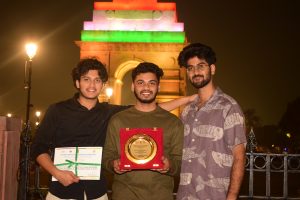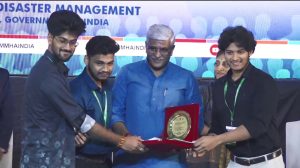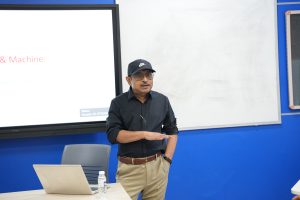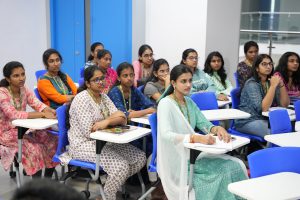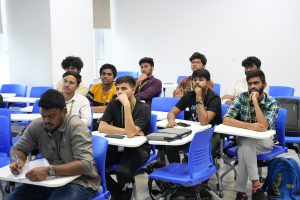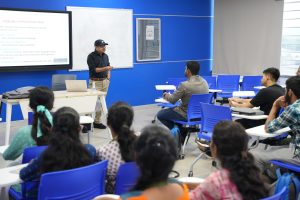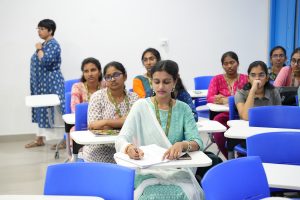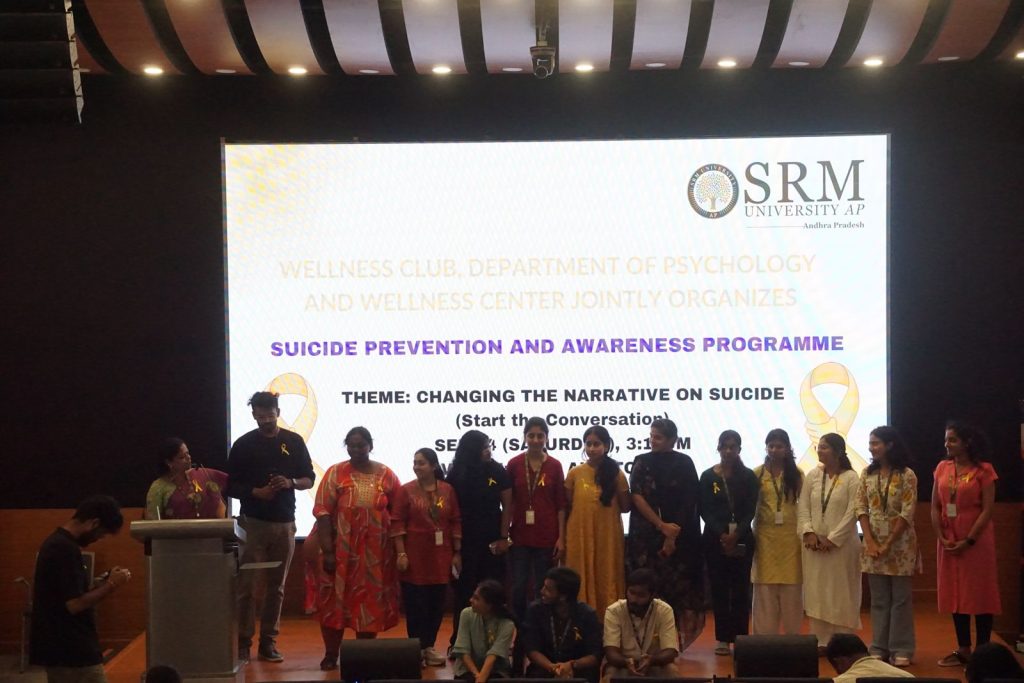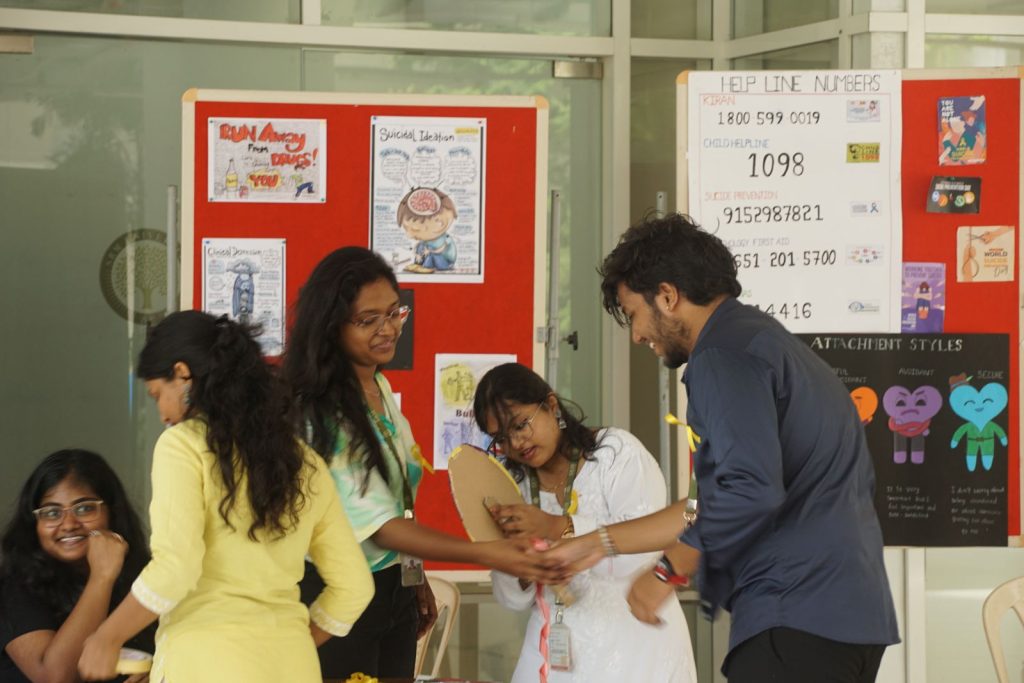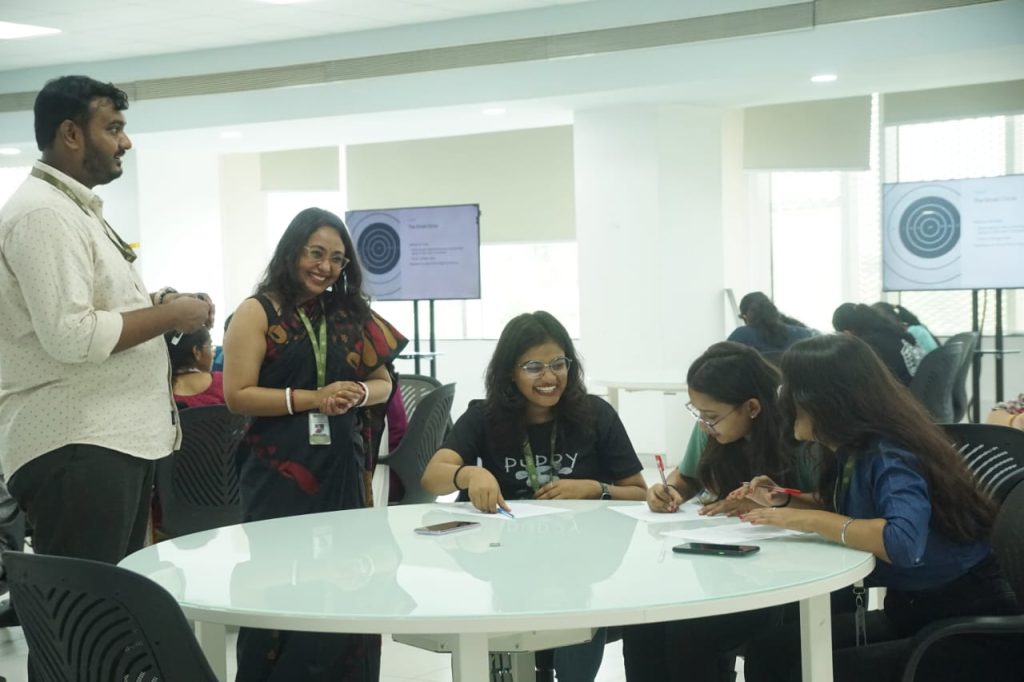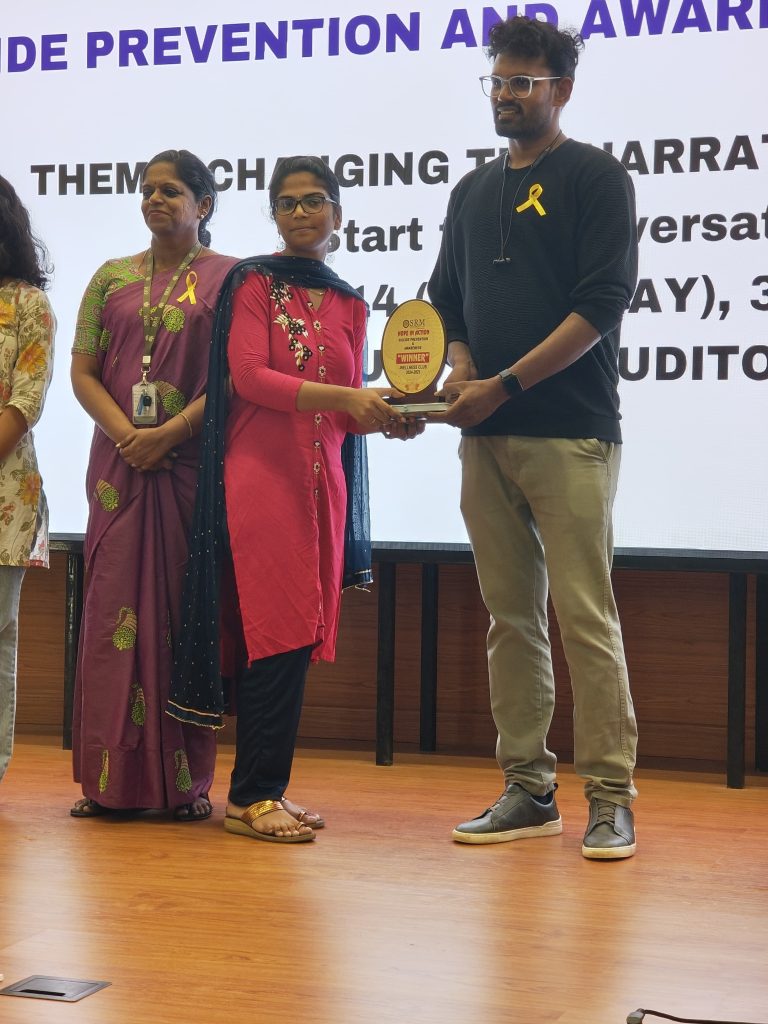CINEMATES Team Clinches 2nd Prize in National Documentary Competition on Disaster Management
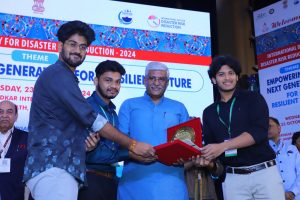 SRM University-AP is thrilled to announce that its talented CINEMATES team has secured the 2nd prize at the national level in the Documentary Competition on Disaster Management. This prestigious event was organised by the National Institute of Disaster Management (NIDM) under the Ministry of Home Affairs, Government of India, in celebration of the International Day for Disaster Risk Reduction 2024.
SRM University-AP is thrilled to announce that its talented CINEMATES team has secured the 2nd prize at the national level in the Documentary Competition on Disaster Management. This prestigious event was organised by the National Institute of Disaster Management (NIDM) under the Ministry of Home Affairs, Government of India, in celebration of the International Day for Disaster Risk Reduction 2024.
The competition centred on the theme “Empowering the Next Generation for a Resilient Future,” encouraging participants to explore innovative approaches to disaster management through their creative works. The CINEMATES team’s entry, a short film titled “After Shock,” stands out for its poignant narrative and compelling visuals that underscore the critical importance of disaster management education.
Written and directed by the brilliant student Shanmuka Shiva Durgesh Durvasula, “After Shock” delves into the harrowing experience of an earthquake through the contrasting perspectives of two individuals. The film masterfully portrays their survival instincts, shedding light on the emotional and psychological impact of such disasters. Noteworthy contributions in editing were made by Shaik Thaheer, Durgesh, and stunning cinematography by Siva Avula, all of which elevate the film’s powerful message.
In addition to the recognition, the team was awarded a cash prize of ₹1,50,000, a testament to their hard work and dedication. This achievement not only highlights the creative talents of SRM University-AP’s students but also reinforces the institution’s commitment to fostering a culture of awareness and resilience in disaster management.
As the university celebrates this remarkable accomplishment, it encourages all students to continue their journey toward making a meaningful difference in society through innovative thinking and responsible filmmaking.
- Published in Departmental News, News, student affairs news, Students Achievements
Bridging Minds and Machines: A Guest Lecture on Language Processing
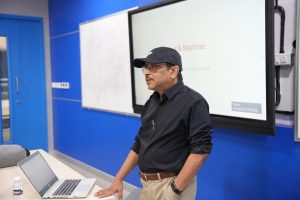 The Department of Literature & Languages hosted a guest lecture for students enrolled in the open elective course “Decoding Language,” which is based on Neuro-Linguistic Programming (NLP). The lecture took place on October 14 and 15, 2024 and featured Dr Debdarsan Niyogi, an authority in Artificial Intelligence, Machine Learning, and Generative AI.
The Department of Literature & Languages hosted a guest lecture for students enrolled in the open elective course “Decoding Language,” which is based on Neuro-Linguistic Programming (NLP). The lecture took place on October 14 and 15, 2024 and featured Dr Debdarsan Niyogi, an authority in Artificial Intelligence, Machine Learning, and Generative AI.
Dr Niyogi’s lecture, titled “Mind & Machine: How Language is Processed,” focused on the intersection of human cognition and artificial intelligence in language processing. He provided in-depth insights into how natural language processing (NLP) algorithms enable machines to interpret and generate human language. The sessions bridged the gap between human linguistic abilities and machine learning models.
Students gained valuable knowledge about the parallels between human and machine language processing. They learned about the complexities of NLP and its real-world applications in AI, data science, and machine learning. This understanding will not only enhance their grasp of neuro-linguistic programming but also prepare them for future endeavours in the growing field of AI-driven language technologies.
- Published in Departmental News, English news, News
Department of Psychology and the Wellness Centre Partner for Mental Health Awareness Programme
 The Wellness Club under the Department of Psychology, in collaboration with the Wellness Center at SRM University-AP, hosted a mental health awareness programme aimed at undergraduate students on September 14, 2024. The initiative focused on raising awareness about mental health and suicide prevention while promoting a supportive campus environment for the students.
The Wellness Club under the Department of Psychology, in collaboration with the Wellness Center at SRM University-AP, hosted a mental health awareness programme aimed at undergraduate students on September 14, 2024. The initiative focused on raising awareness about mental health and suicide prevention while promoting a supportive campus environment for the students.
University counsellors Ms Mohua Das, Ms Alekhya Sankara, and Mr Joel Kristof Gibbs played a pivotal role in the programme, leading discussions and workshops on the emotional and psychological challenges students may face. They addressed critical issues like stress management, anxiety, and crisis intervention, highlighting their extensive experience in supporting students’ mental wellness.
The programme’s objectives included reducing the stigma surrounding mental health issues, encouraging open conversations, and equipping students with tools to recognise warning signs of suicide. Interactive activities, such as the Wall of Hope and Emotional Wheel, engaged participants in expressing hope and reflecting on their emotions.
In addition to discussions, an Art Therapy Workshop provided a creative outlet for attendees, teaching grounding techniques for emotional healing. Students also showcased their creativity through poetry and digital art competitions, with themes centred on hope, resilience, and suicide prevention.
An information booth offered attendees resources on mental health support systems and coping strategies. The event concluded with a Valedictory Ceremony, where reflections on the day were shared, and prizes were awarded to competition winners.
Participants left feeling empowered and equipped with valuable tools to support their mental well-being and that of their peers. This initiative marks a significant step in SRM University-AP‘s commitment to fostering a supportive and safe environment for student mental health. As mental wellness continues to be a priority, the varsity encourages ongoing participation in mental health initiatives to further enhance awareness and support across the campus.
- Published in Departmental News, News, Psychology News, student affairs news
A Novel Method to Estimate Parameters in Complex Biochemical Systems
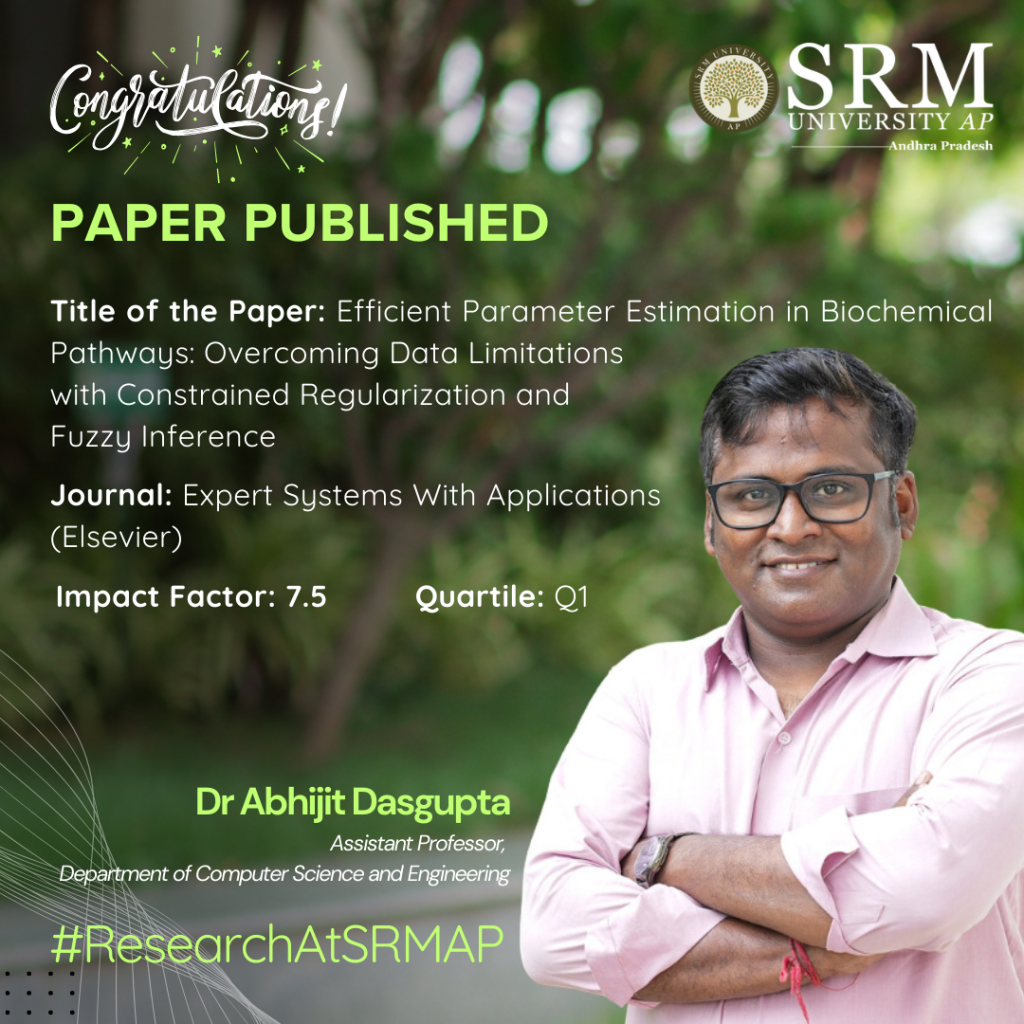
With the advent of cutting-edge technology, Dr Abhijit Dasgupta, Assistant Professor at the Department of Computer Science and Engineering, has conducted breakthrough research in understanding biochemical systems with limited data in hand. His research has been published as a paper titled “Efficient Parameter Estimation in Biochemical Pathways: Overcoming Data Limitations with Constrained Regularization and Fuzzy Inference” in the Elsevier journal Expert Systems With Applications, having an impact factor of 7.5.
Abstract
This study introduces a new method to estimate parameters in biochemical pathways without relying on experimental data. The method called the Constrained Regularized Fuzzy Inferred Extended Kalman Filter (CRFIEKF) uses fuzzy logic to estimate parameters based on known but imprecise relationships between molecules. To handle complex and unstable data, the method incorporates Tikhonov regularisation, improving accuracy and stability. CRFIEKF was tested on several pathways, including glycolysis and JAK/STAT signalling, and reliable results were obtained. This approach offers a useful tool for estimating parameters in complex biochemical systems, especially when experimental data is limited.
Explanation of the Research in Layperson’s Terms
This research is about finding a new way to predict how living cells work, especially when scientists don’t have enough data from experiments. Normally, to understand how cells function, scientists need to collect a lot of information over time, which can be costly, difficult, or even impossible.
To solve this, the researchers developed a new method that doesn’t need as much experimental data. Instead of relying on exact measurements, their method uses fuzzy logic, which is like making smart guesses based on patterns and relationships we know, even if we don’t have perfect information. They also used a technique to keep these guesses steady and reliable, even when the data is messy or incomplete.
They tested this method on different biological processes, such as how cells turn food into energy (a process called glycolysis) and how cells send signals using proteins (like in the JAK/STAT pathway). The method worked well and gave accurate results.
In simple terms, this research helps scientists predict how cells behave without needing a lot of expensive and hard-to-get data, making it easier to study the complex systems inside living organisms.
Practical Implementation/Social Implications of the Research
The practical implementation of this research lies in its ability to accurately predict how biological systems, such as cells, function without relying heavily on time-consuming and costly experimental data. This method can be applied in various fields, including drug development, personalised medicine, and agriculture, where understanding complex biological processes is crucial. For instance, pharmaceutical companies could use this technique to model how a drug will interact with different biological pathways, speeding up the drug discovery process. Similarly, it could help tailor medical treatments to individual patients by predicting how their unique biological makeup will respond to specific therapies.
The broader social impact of this research is significant. By reducing the need for extensive experimental data, this method can lower the cost and time required for scientific discoveries in healthcare and biotechnology. This could lead to faster development of new medicines, more affordable healthcare solutions, and personalised treatments that improve patient outcomes. In agriculture, this method can help optimise crop growth and resilience, contributing to food security. Overall, this research provides a pathway for more efficient and cost-effective advancements in biology, healthcare, and environmental sciences, ultimately benefiting society by improving health and sustainability.

Collaborations
1. St Jude Children’s Research Hospital, Memphis, USA
2. University of California, San Diego, USA
3. Columbia University, New York, USA
4. Nantes Université, France
5. University of North Carolina at Chapel Hill, USA
6. Institute of Himalayan Bioresource Technology, Palampur, India
7. Indian Statistical Institute, Kolkata, India
8. Aliah University, Kolkata, India
9. Michelin India Private Limited, Pune, India
10. Gitam University, Bangalore, India
Future Research Plans
Building on the foundation laid by this research, the next steps will involve expanding its applications to more complex biological systems and personalised medicine. The following outlines a future roadmap:
1. From Time-Course Data to Pathway Enrichment and Single-Cell Modeling:
The current method, which estimates parameters without relying on time-course data, can be adapted to use time-course data when available. Time-course data captures how biological processes change over time, offering valuable insights. By integrating this data, we can refine the parameter estimation and achieve a more precise pathway enrichment analysis. This approach can be particularly beneficial in single-cell studies, where understanding the variability in cellular responses within complex diseases like cancer, diabetes, or neurodegenerative disorders is crucial. Modelling these pathways at the single-cell level will enable us to capture heterogeneity within tissues and improve disease understanding.
2. Simulating Pathways to Identify Drug Targets:
Once the pathways are enriched and modelled, we can simulate these biological networks to predict how different interventions—such as drugs—might influence the system. This simulation can help identify potential drug targets, particularly those that are critical in disease progression. For instance, by manipulating the modelled pathways, we can observe how specific proteins or molecules influence the disease state, providing insights into where a drug could be most effective.
3. Predicting Drug Side Effects:
After identifying potential drug targets, the next step is to predict the side effects of these interventions. The same model can simulate unintended consequences by analysing how modifying a target impacts other connected pathways. This simulation can provide early warnings about potential side effects, reducing the risk during later stages of drug development. Understanding these off-target effects at an early stage will be crucial for designing safer drugs.
4. Predicting Drug Molecules Using Generative Adversarial Networks (GANs):
Incorporating machine learning, particularly Generative Adversarial Networks (GANs), can take this research to the next level. GANs can be trained to generate new drug molecules by learning from existing drug databases. By feeding the pathway model’s identified targets into the GAN, we can generate candidate drug molecules that are predicted to interact with these targets effectively. This approach can significantly speed up the drug discovery process by automating the design of new drug candidates tailored to specific biological pathways.

5. Integration with Omics Data for Personalized Medicine:
The future of personalised medicine relies on integrating various layers of biological data—such as genomics, transcriptomics, proteomics, and metabolomics—into a cohesive model. By integrating pathway data with these other “omics” layers, this research will facilitate a more comprehensive understanding of individual patient biology. This integration allows for tailored treatment strategies, making personalised medicine more achievable. For instance, based on an individual’s genetic makeup and biological pathways, we can predict how they will respond to specific drugs and design personalised therapies with minimal side effects.
6. Pathway-Based Drug Design and Validation:
Once potential drug molecules are identified using GANs, they can be simulated within the enriched pathways to test their efficacy in silico. These simulations will allow researchers to understand how the drug interacts with the target pathway and its downstream effects. If the simulation shows promising results, the drug candidates can be prioritised for lab testing and clinical trials. This systematic approach, from modelling to simulation, could drastically reduce the time and cost associated with traditional drug discovery processes.
Summary
This plan transforms the current research from a powerful parameter estimation technique into a comprehensive framework for personalized medicine and drug discovery. By expanding to time-course data, single-cell modeling, pathway simulation, and integrating cutting-edge AI techniques like GANs, we can predict drug molecules tailored to individual biological systems. This personalized approach not only streamlines drug discovery but also enhances the safety and effectiveness of treatments, paving the way for more efficient and precise medical interventions.
- Published in CSE NEWS, Departmental News, News, Research News


